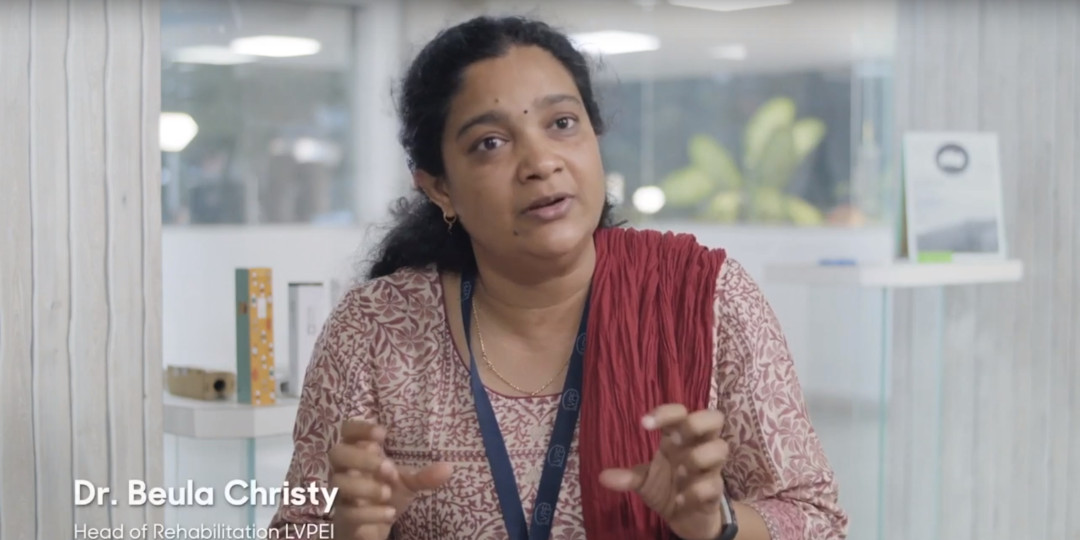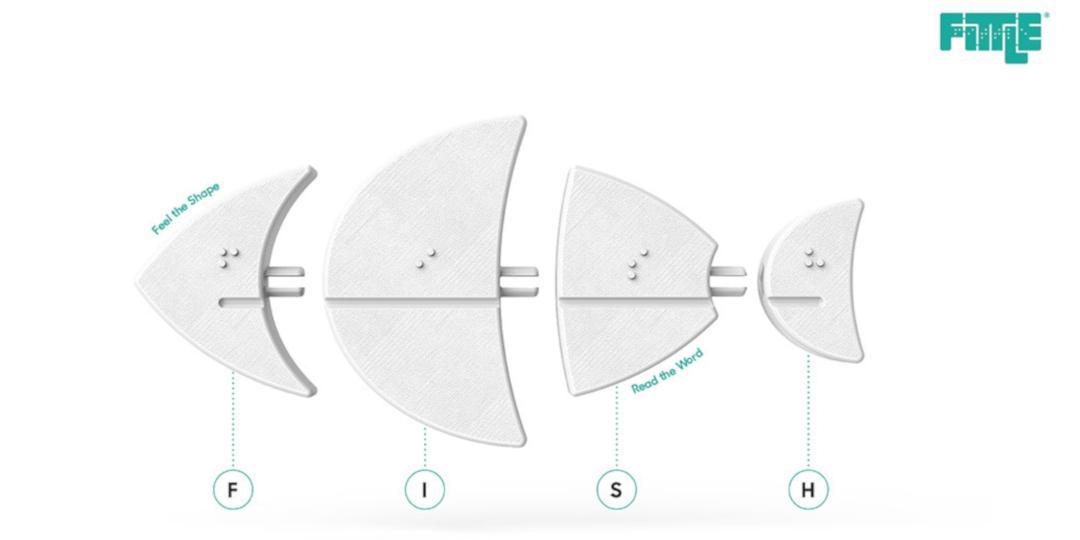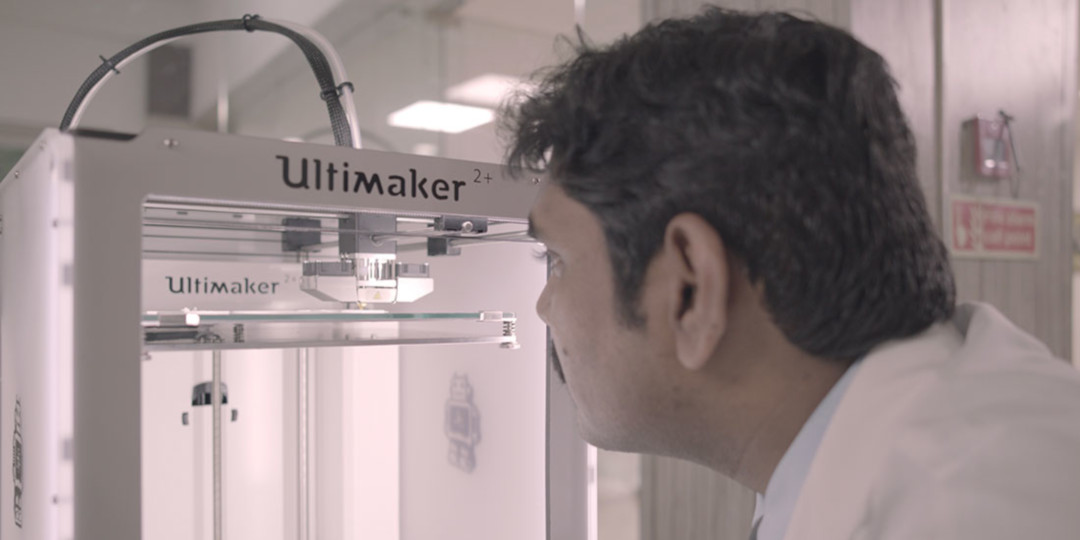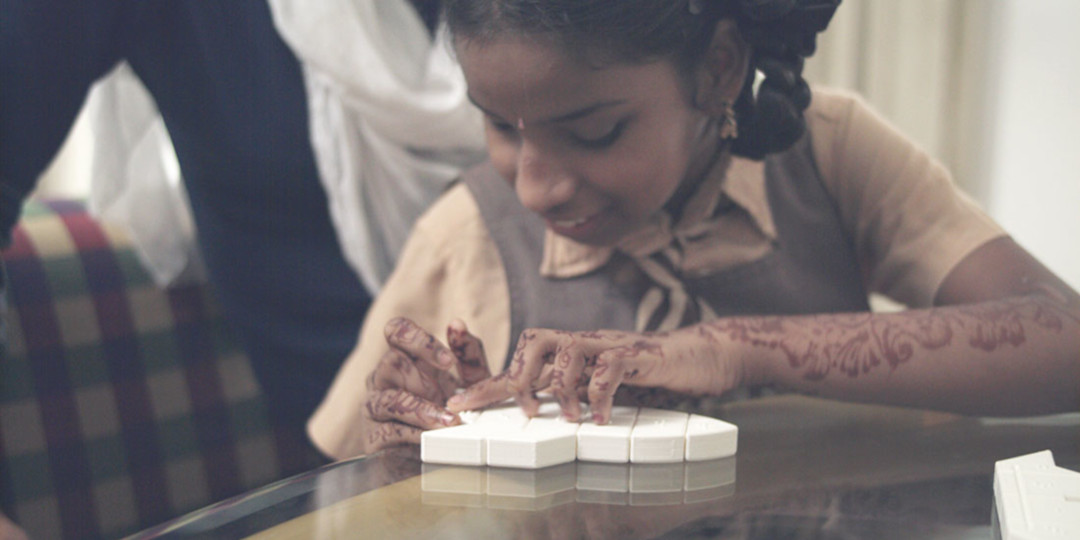For blind and visually impaired people, learning to read braille is essential. But for many, braille learning resources are either too costly or ineffective. Now a new educational puzzle 3D printed on Ultimaker printers is making this vital skill accessible to all.
The ability to read braille empowers people with visual impairments to process information effectively and without the need for technology like screen readers. Learning braille increases the chance of higher education and employment by more than three times.
A digital braille reading device costs over $1,000, making it unaffordable for the 90% of blind and visually impaired people living in developing countries. Basic, outdated learning material is often provided in their place, making the skill difficult to master.
Which is where Fittle (and 3D printing) fits in.
The Fittle puzzle
A group of designers and eye care specialists has created the first 3D printed braille puzzle. Fittle is a collaboration between Indian designer Tania Jain, India’s leading eye institute LVPEI, German educational toy company Ravensburger, and independent global communication group Serviceplan.
Each puzzle set is divided into pieces which together make the letters of a word and object. Connecting marks on the pieces help the learner to work out how it fits together by touch, and once finished they discover the braille word for that object.
Feedback has been overwhelming so far. More and more children are learning braille better with Fittle.
The parts are printed with a hollow design to minimize material usage. The low cost of prototyping with 3D printing also allowed for the perfect design to be realized, with the help of feedback from blind users.
There is already a growing collection of Fittle shapes, all specially designed to be 3D printed and then distributed across India.
Puzzles are produced using the Ultimaker by LVPEI
Scaling up with 3D printing
With support from Novabeans, the Fittle project team decided that Ultimaker 2+ 3D printers gave the balance of price, quality, and usability they needed. Their original prototype was made using wood, but a cheaper solution was needed in order to make the product truly accessible.
The team also experimented with larger, industrial 3D printing solutions as well as budget printers, but these respectively proved either too expensive or unable to reliably produce models with the required durability and accuracy.
Using Ultimaker printers, Fittle can keep up with demand by 3D printing their finished puzzles, then distributing them to LVPEI’s regional centers where they are given to braille learners.
And the difference 3D printing can make is huge. For $10,000, Fittle could supply four digital braille readers or 200 braille books. The same investment can provide 16,000 3D printed puzzles and the cost of the printer.
Learning braille with the Fittle fish
Christoph Bohlender, Creative Director at Serviceplan Health & Life, says, “Feedback has been overwhelming so far. More and more children are learning braille better with Fittle.”
And their plans for the future? The Fittle team want to fund more printers, distribute more puzzles, create more shapes, eventually move to other regions.
You can get involved at the Fittle website by making a donation to their project, or downloading a model and having a go at learning some braille!


























